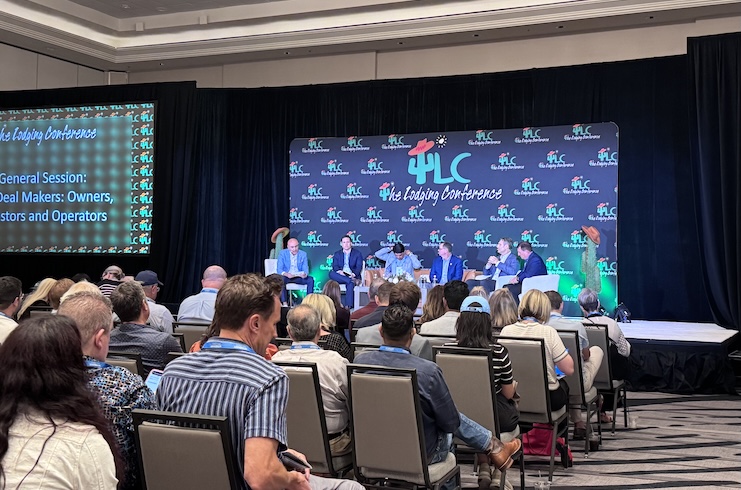
On the first day of The Lodging Conference, a panel titled “The Deal Makers: Owners, Investors, and Operators” discussed the state of the industry, deals and transactions, and travel trends. Led by Mitch Patel, founder and CEO, Vision Hospitality Group, the panel also discussed the bifurcation, uncertainty, and the cyclical nature of the industry.
While there is uncertainty in the market, recovery is K-shaped, according to Ben Rosenbaum, managing director, Starwood Capital Group. He noted the bifurcation in the market, where “consumer sentiment for luxury product is at an all-time high.” He elaborated, “RevPAR growth for the luxury, upper-upscale is growing year over year, and the bottom tier of the market, the midscale/economy segment, is really struggling. And you’re seeing that particularly over the last six months or so.”
Jeff Wagoner, president and CEO, OUTRIGGER Hospitality Group, also noted the bifurcation. Wagoner said that while his company’s perspective is primarily based in Hawaii, “the luxury space has done exceptionally well even though the market is hurt by some of the tariffs and some of the lack of international travel. … The luxury space has been incredibly resilient through all of this.”
For investment, Dave Pollin, co-founder and president, Buccini Pollin Group, and chairman, PM Hotel Group, noted that markets such as Baltimore, Portland, and New Orleans are available, calling it “unusual that all these markets that are performing well have assets that are up for grabs.” For Buccini Pollin Group’s home market, Washington D.C., he noted that while federal government travel is “the biggest demand segment in the [United States],” it’s only about 3 percent of occupied room nights. For Washington, D.C., specifically, Pollin said the city is down 6 percent this year. “We’re going to remain hopeful, and I think the end of the shutdown could be a catalyst for [demand] in 2026.”
For REITs specifically, Barry A.N. Bloom, president and chief operating officer, Xenia Hotels & Resorts, Inc., said, “If you’re a global asset allocator, you can put money anywhere in the world, and you decide to put money in U.S. stocks, maybe U.S. stocks are 3-4 percent of the U.S. stock market. Then you look at REIT, and you recognize … the less you make up of the market, the less likely investors are investing.” Also, for Bloom’s team, “transparency is incredibly important at the property level” to assist with the owner’s business model.
But there is a lot of challenge facing the industry, according to Naveen P. Kakarla, president and CEO, HHM. What scares him the most “is where inflation and cost of goods will settle,” he said. “Travel and consumerism are up, and we are correlated to GDP. And we have a country that I believe will rally around ensuring that is the case for as long as I can predict, despite short-term headwinds.”






